The Forgotten Voyage: Ansel Adams on the ICW
Thanksgiving Along the 'Ditch,' and All the Photos We Cannot See
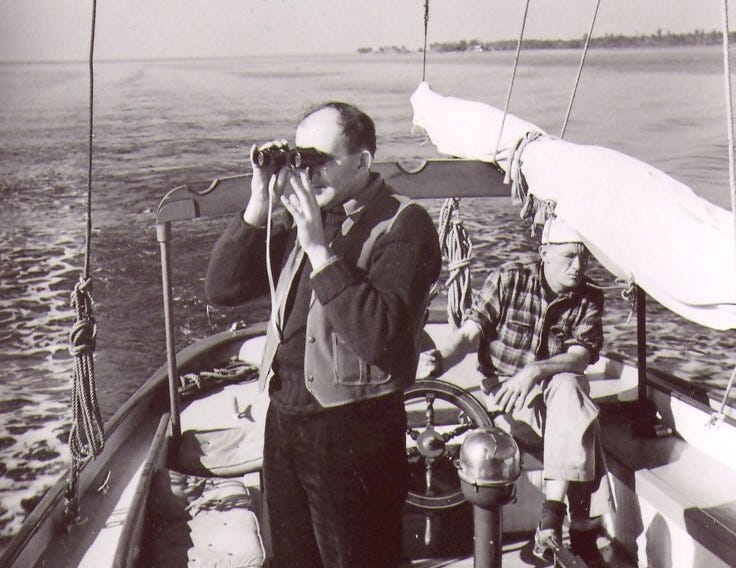
Transiting the Intracoastal Waterway recently, Wallace and Sharon Gouk, who go by the handle “Shawala Gouk” on Facebook, decided to photograph each abandoned or sunk or partially sunk vessel that they could frame from a moving boat and post them all on Facebook. Their entire catalog, 88 boats from North Carolina to Lake Worth, Florida can be viewed on the Trawler Living & Cruising Facebook Group.1 This effort reminded Loose Cannon of another photographer and his ICW adventure, a story first published in May 2022.
Traumatic events mark the beginning and end of every American epoch. Their names begin with words like “pre-war, “post-war,” “pre-911,” “post-911” and, most recently, “pre-covid.”
The Atlantic Intracoastal Waterway is a national treasure. Once the purview of barges and other commercial traffic, the ICW extends 1,100 miles from Virginia to Key West, Florida, man-made canals linking a collection of inlets, rivers, bays and sounds.
Quite accidentally, the great American landscape photographer Ansel Adams documented the ICW one year before the Japanese attack at Pearl Harbor launched American involvement in World War II, a national trauma that changed everything. Adams photos depict an ICW at a moment before the deluge. Thereafter, as the generation that won the war ventured out in small craft, the character of the ICW transitioned from commercial to recreational.
By autumn 1940 Adams was well established as landscape photographer, though another year would pass before he would shoot his most famous photo of all, Moonrise, Hernandez, New Mexico. As with many of us, Adams was drawn to his first boating adventure by the contagious enthusiasm of a good friend.
The California native was convinced to go on a spur-of-the-moment cruise of the ICW aboard the schooner Billy Bones II. Naturally, he took pictures, which inadvertently documented the end of an era, but, because of draconian copyright enforcement, the collection won’t be available for viewing until 2054, 70 years after Adams’ death.
Adams was friends with painter Georgia O’Keeffe, another artist reknown for Western imagery. In 1936, she introduced him to her friend David McAlpin, a photography enthusiast and trustee of the Museum of Modern Art in New York City.
McAlpin was an investment banker credited with a key role in establishing photography as fine art, a goal he encouraged with donations from his personal fortune. He was also to become a patron and lifelong friend to Adams. In 1937 and ’38, the two went on camping trips to the western sierras, decidedly Adams’ home turf. You could look at their Intracoastal Waterway jaunt as a reciprocal gesture, roughing it in the style of the East Coast elite.
Biographers say Adams was near the peak of his game by 1940 when McAlpin involved the 38-year-old pianist-turned-photographer in his campaign to establish a new photo department at New York’s Museum of Modern Art. “In November, having finished the first phase in setting MOMA’s new department, McAlpin suggested to Adams that they take a break to take a Thanksgiving holiday cruise,” Stephen Jareckie wrote 66 years later.
Jareckie was curator of the exhibit of photos from the trip, displayed at the Fitchburg (Massachusetts) Museum of Art in 2007 and later at the Museum of the Albemarle in Elizabeth City, N.C., where Billy Bones II had stopped for fuel after the Dismal Swamp. “Ansel Adams in the East” featured 50 prints made from proofs found in the estate of McAlpin’s second wife.
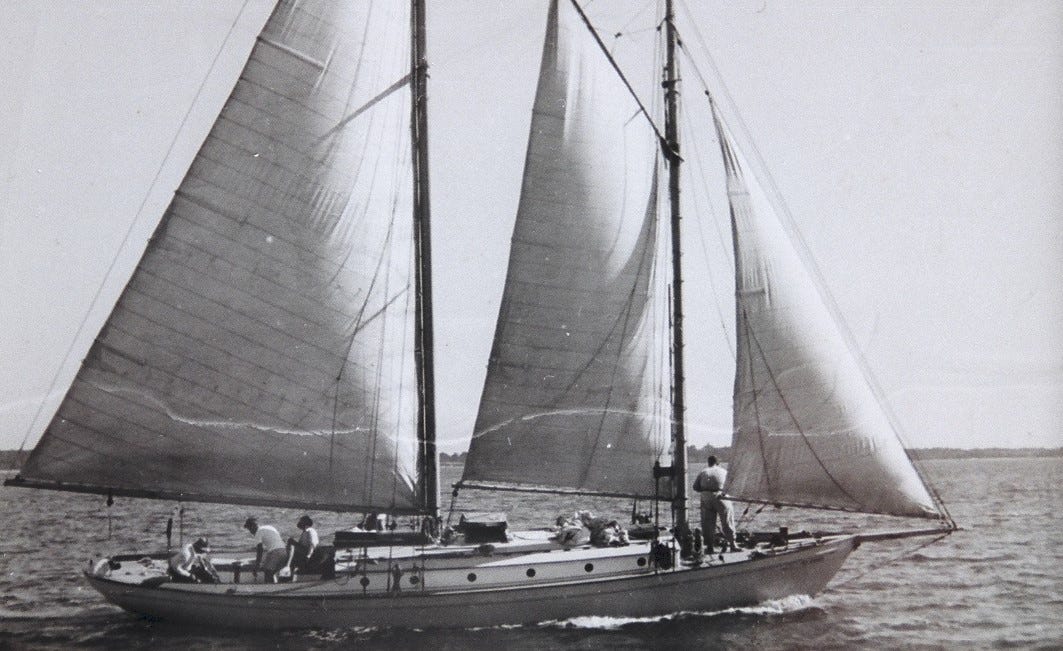
The captain of Billy Bones II was the late John DePeyster Stagg, a larger-than-life character on the Long Island waterfront. Stagg, 26 at the time, was a charter boat captain with all the right stuff; he was a storyteller, a fine drinking partner and with a reputation for wizardry in the galley.
Billy Bones was a reference to the enigmatic, hard-drinking old salt introduced at the beginning of “Treasure Island” by Robert Louis Stevenson—and a clue to young Stagg’s outlook on life. Stagg was always threatening to write a book: “Staggering with Stagg from Maine to Florida, a Guide to the Better Bars.”
The Bones, 42-feet LOA, had been built in 1929 by the Casey Boatbuilding Company of Fairhaven, Massachusetts, which basically capied of John Alden’s Malabar V right down to her Scripps gasoline engine. Stagg bought her second-hand, renamed her Billy Bones II and put her to work in the charter trade, taking guests on trips along the East Coast and in the Bahamas. Unusually for her time and type, she had two heads.
David Hunter McAlpin had inhaled the briny air while serving as an ensign on a Navy subchaser during World War I. By the 1930s, he had become a partner at Clark Dodge & Co. investment bankers. McAlpin and Stagg knew each other because Stagg had some money invested with the firm, and both were from established New York families. Stagg was a descendant of George Washington’s aide at Valley Forge, and McAlpin’s family status had allowed him to marry into the Rockefellers.
Adams had a reputation for working hard, playing hard and enjoying strong drink. McAlpin’s pitch must have had tremendous appeal—the idea of Huck Finning it down the waterway on a schooner! Adams and McAlpin caught up with the Billy Bones II in Norfolk, Va., joining Stagg and his crew, a professional sailor named Winfield Scott, known to everyone as Scottie.
Thanksgiving, Nov. 21, 1940, found Billy Bones II in the Dismal Swamp and John Stagg in the galley cooking turkey. Curator Jareckie wrote, “Adams and McAlpin took pictures of the tree-bordered canal. Adams discovered unexpected beauty in the Great Dismal Swamp.” (One wonders whether Stagg, like other schooner chefs before him, had to break the turkey’s backbone, squashing it to fit it in the ship’s oven.)
Schooner and crew continued motoring on the ICW to Thunderbolt, near Savannah, where Adams and McAlpin bid goodbye after 10 days and 580 miles together.
A tripod is useless aboard a boat, so taking his usual glass-plate camera would have been silly. Adams and McAlpin shared a new Zeiss Super Ikonta BX camera, a bellows-camera that folded and closed into compact package when not in use. Images were recorded on a big 2¼-inch-square negative. The museum exhibit images were made from 5-by-5-inch proofs, unimproved by darkroom printmaking techniques that were also part of Adams’ artistry.
Today’s photographers process their finished works with Photoshop, but during the era of film and glass plates, the great shooters achieved some of the same effects using “dodge and burn” techniques to manipulate the light as it was projected through a negative onto photo-sensitive paper.
As I recall, the pictures Adams and McAlpin took on their 1940 voyage contain no stunners, nothing as dramatic as Adam’s western landscapes; no “Moonrise” or “The Tetons, Snake River.”
To a journalist, however, the Adams photos have a familiar feel. With only basic equipment and moving aboard a boat on a delivery schedule through unfamiliar territory, Adams adjusted his approach. The fine-art photographer became a documentarian.
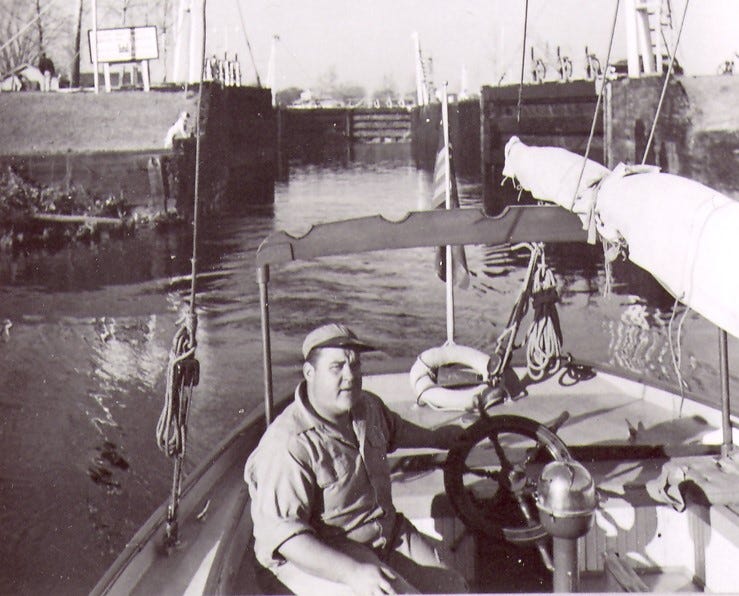
The photos indeed show the crew together and individually as any vacation collection would. They show the Dismal Swamp, canal locks, a swing bridge, docks and fishing boats. Commentators who saw the museum prints described the body of work as “vacation snapshots.” To be fair, however, it should be noted that Adams was working it pretty hard, scooching low for some compositions, going high for others. In fact, Adams at one point climbed the mainmast to fill his frame vertically in the face of a flat Carolina landscape.
The docks Adams snapped are the rough-hewn province of fishing boats, not the pleasure craft that would arrive in 1950s. The barrier islands of the Carolinas would have been largely free of beach houses. Hilton Head hadn’t happened either.
Instead, a boatman was captured rowing by the light of dawn at Thunderbolt, an image that could just as well have been painted in oils. We see the Annie D. Bell, a Chesapeake Bay lumber schooner under sail.
Describing an image labeled "Fort Sumter, Carolina, on horizon," one critic wrote, “The fortifications…emerge as the merest bump off in the distance. Dominating the picture are long tendrils of cirrus that seem to converge on the far-off island, like arrows—or accusations.” In another shot, Adams experimented looking for abstract imagery in the shape of the boat’s wake.
Historical significance and craftsmanship notwithstanding, the trustees of the Ansel Adams Publishing Rights Trust in Mill Valley, California, criticized the Fitchburg exhibit and claimed that Adams himself would have objected to such a display of his work. The ICW shots, trustees argued, are mere proofs. All the famous Adams photographs had been refined by the photographer’s masterful darkroom techniques. Adams, the trustees said, would never have approved an exhibition of raw proofs.
"I think it's unethical in terms of museum ethics and behavior. It's something that never would be done at MOMA or the Art Institute of Chicago,” William Turnage, one of three Adams' trustees, told the Associated Press. "But you know, what the heck? Some people are going to take advantage and try to profiteer, and there's nothing we can do about it."
After the outbreak of war, McAlpin rejoined the navy as a commander and used his business expertise on behalf of the government to monitor shipbuilding contracts. Adams greatest wartime contribution was journalistic in nature as he documented life at Japanese-American internment camp at Manzanar, California. Once exhibited, this collection was subtitled “Suffering under a great injustice.”
The artist and the enthusiast remained friends for life; Adams died in 1984, McAlpin in ’85. Stagg crossed the bar that same year.
Stagg sold Billy Bones II in 1942. The U-boat menace had sunk his charter business. The buyer was a Charles Foster (most likely the same Marblehead yachtsman and hotelier known for owning more than 60 pleasure boats during his lifetime). During the war, Stagg went to work for the Thomas Knutson boatyard, helping to build 110-foot submarine chasers for the Navy.
The Adams trust justified its censorship by asking whether anyone would really be interested in the exhibit had someone other than Adams shot the photos.
I would rephrase the question: Why should Americans be prevented from seeing these images just because Adams was the photographer? These photos show us a slice of waterway history. And they are proof of how a boating lifestyle connects us with nature and nurtures lifelong bonds of friendship and memory.
Gouk was asked why he undertook this documentation project while other ICW navigators were studiously clinging to a pre-plotted electronic path, lest they too run aground and be forced to join the ghostly fleet.
“Sharon and I were talking about how few Canadian boats we had seen going south this year,” Gouk said. “That led to a chat about the slow demise of cruising and the many and varied reasons for it. One of the causes we think is the the water front town/cities clamping down on cruising type boats due to the number of derelicts.”
Another answer may be that while cruising Canadians return to their country in spring, increasingly their boats do not. Green Cove Springs, Florida, is thick with our northern cousins at the moment, as they prepare and provision for a run to the Bahamas. There are two large dry storage areas there to accomodate their boats over the hot months.
Gouk and others have been gratified that Georgia had remained wreck-free—at least along the ICW, which meanders mainly through salt marsh.
'“Remember this is strictly what can be seen from the ICW channels. This is my first time through Georgia in four years,” he said. “In all other years since ’96, my memory says it should have had some. Perhaps, a cleanup was part of their new anchoring restriction program that have taken hold over the last few years.”



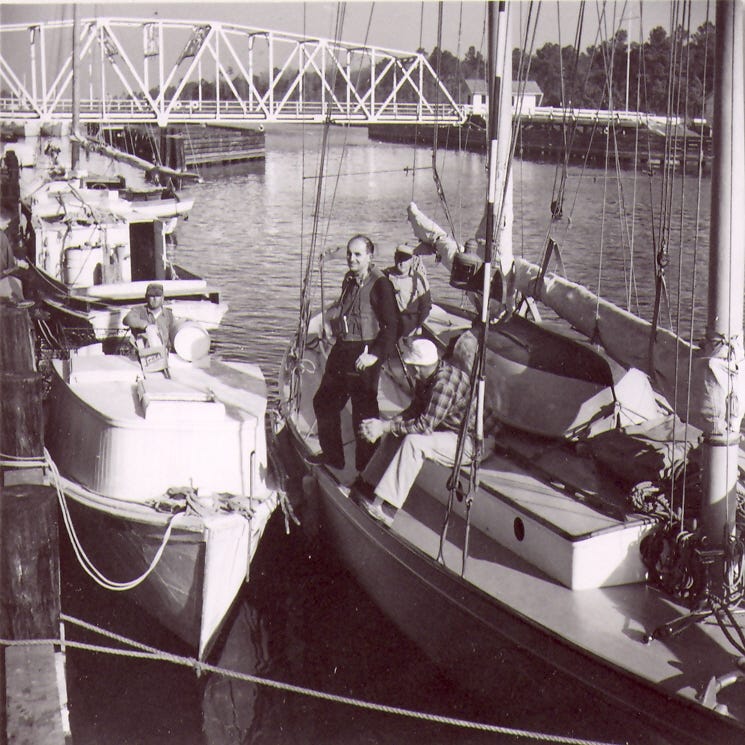
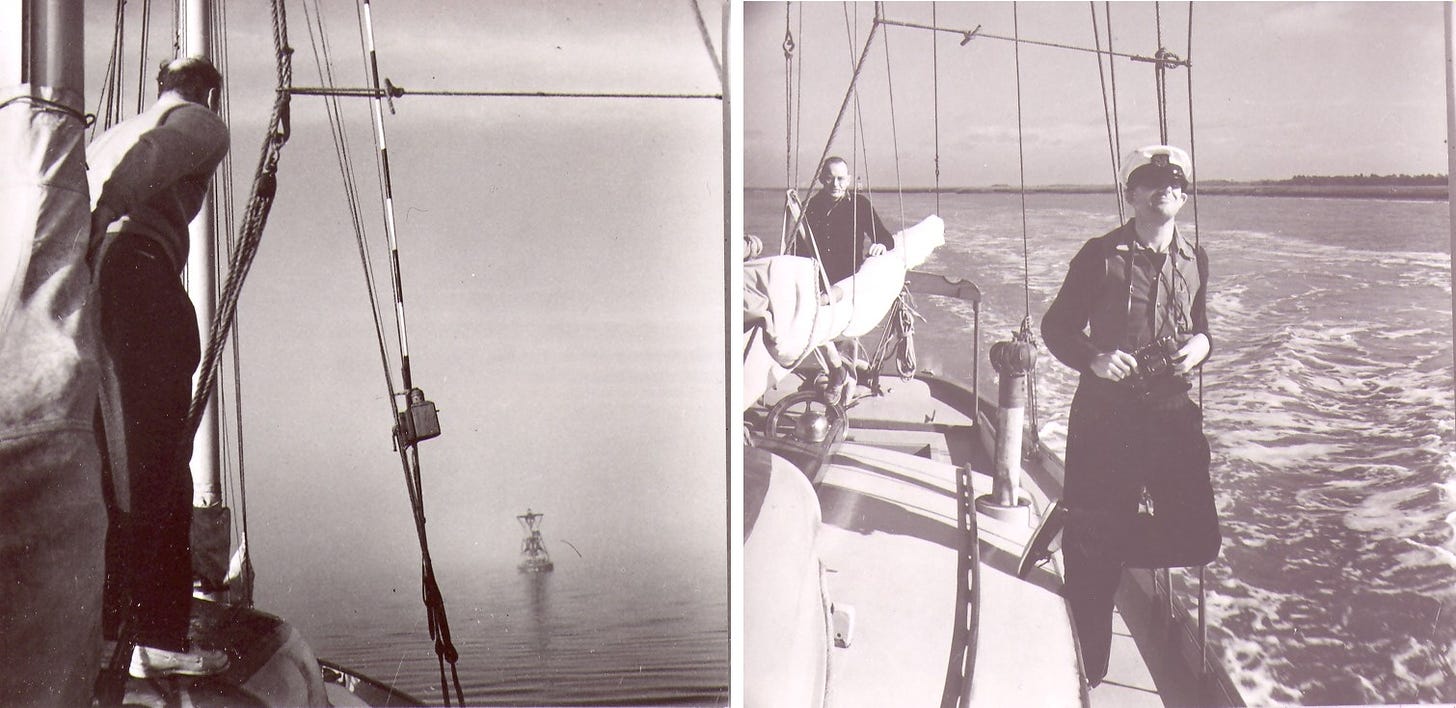
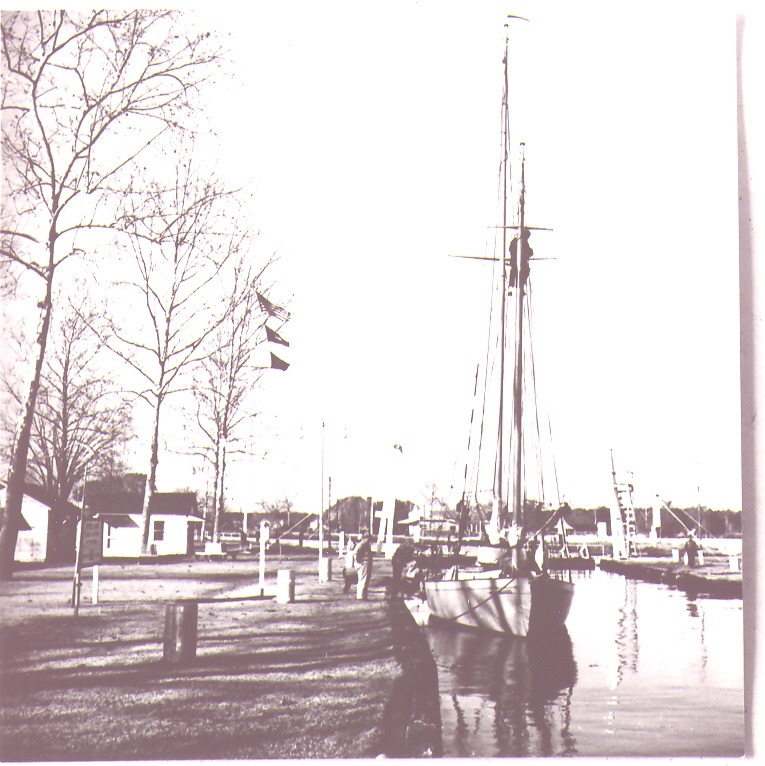
We sailed on the ICW from Florida to Texas years ago on our 26 foot sloop. It was a fun trip, full of friendly faces, fascinating wildlife (including plenty of bugs), a close call with a bridge and some slow-motion groundings. Glad we took plenty of photos!,
Anyone that has sailed the ICW will love this article. " Princess New York " by Joe Richards is a great read about pre war on the ICW. Too bad the mandarins would not countenance combining Adams pictures with Richards story. Thats a coffee table book I would pay for.
Tom Lane